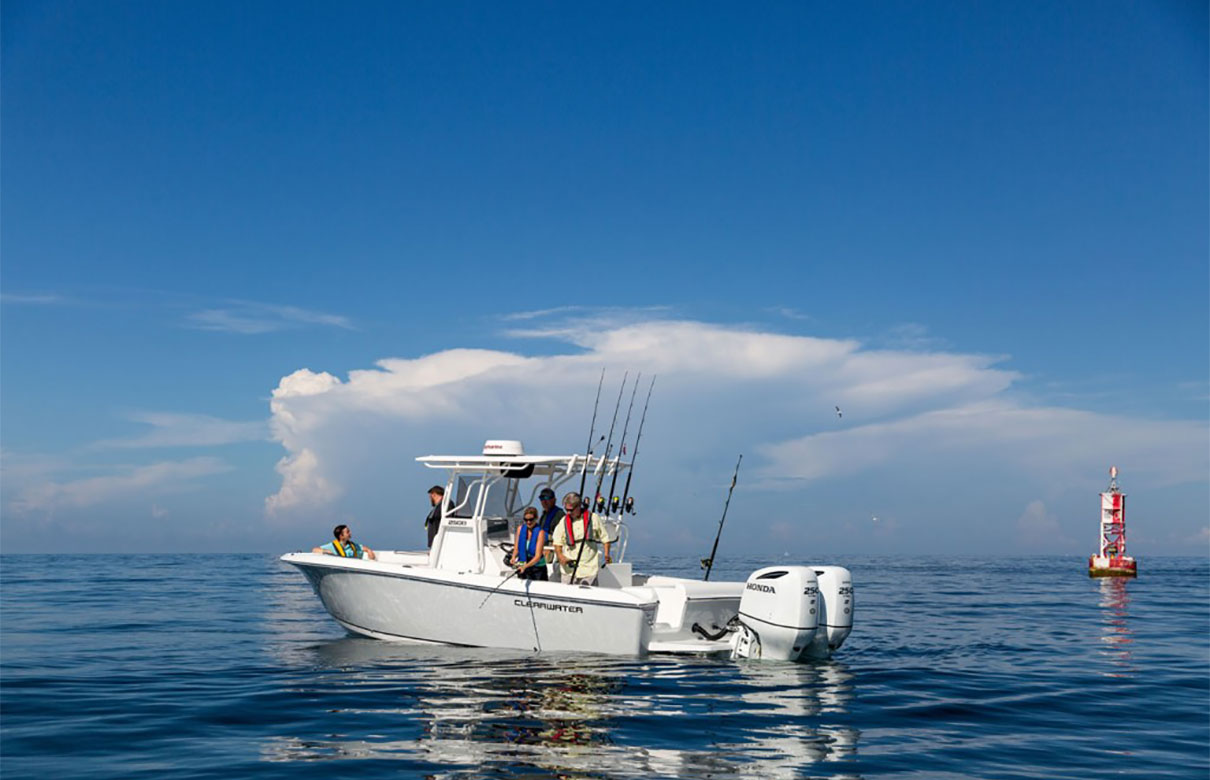2- vs. 4-Cycle Outboard Motors
By: Dan Johnson
 (Photo courtesy of Honda Marine)
(Photo courtesy of Honda Marine)
When it comes down to purchasing a new boat or simply fixing up grandpa's old Johnboat ' will a 2- or 4-stroke outboard motor suffice? That is the question
Whether you’re buying a new boat or re-powering your favorite fishing platform, you face a number of decisions—perhaps the biggest of which is whether to purchase a 2- or 4-stroke outboard.
The battle between these two engine designs is long running, and the differences used to be dramatic. Like loud, obnoxious fishing partners, screaming 2-strokes guzzled gas and spewed blue smoke. Prone to rough idling, they fouled plugs and gummed carbs with a vengeance. Still, 2-strokes were powerful allies, capable of rocketing your boat onto plane and getting to the next honeyhole in a hurry.
Four-strokes, on the other hand, were well-mannered, gentle giants—quiet, easy on fuel, and able to cruise or troll long distances (even at low idle) without a misfire. On the downside, 4-strokes could be cumbersome, heavy for their horsepower, and slower out of the starting gate.
Technological gains in both categories have blurred some of the lines in recent years, giving shoppers plenty to think about when tendering the remaining tradeoffs. Which is why, now more than ever, understanding each category’s strong suits is critical to choosing a powerplant that best fits your personal needs and preferences.
Mechanical Differences
As its name implies, a 2-stroke engine accomplishes the necessary functions of intake, compression, transfer/exhaust and power with just two strokes of the piston (a stroke being defined as the piston’s full travel within its cylinder, in either direction).
READ THE FULL STORY ON IN-FISHERMAN